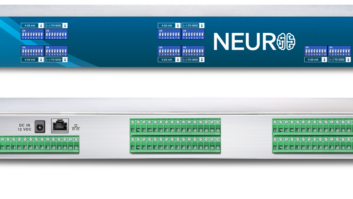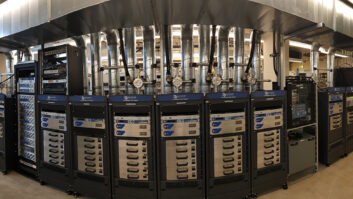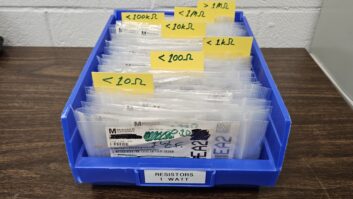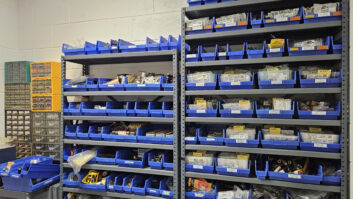
I have watched intently as the latest round of arguments about how to improve AM broadcast stations have become a hot topic in these pages and elsewhere.
I would like to add a somewhat different perspective: I was raised in the 1960s in the suburbs of Washington — by two parents, and by WINX, WHMC and WPGC — and am now a student of spectrum management.
Though I, like many others, cheered on FCC Commissioner Pai’s remarks about the AM Revitalization Initiative at the NAB Radio Show in September, and while I find his enthusiasm refreshing indeed, I think we need to dig down and address some fundamental problems with the AM band as part of this revitalization effort.
Unless the commission is prepared to move AM station licensees to a new band above 30 MHz (an option that will take many more years than AM broadcasters have available, and well beyond Commissioner Pai’s suggested 2014 deadline for AM improvement), it seems to me that AM will never get better in the worsening RF noise environment in the bands below 30 MHz. Some regulatory relief is necessary.
The current commission and its recent predecessors have focused their attention on maximizing efficiency in use of the fully deployed radio spectrum by such regulatory concepts as spectrum overlays, receiver noise temperature and authorizations for unlicensed, “Part 15” RF devices and systems that neither demand interference protection nor are permitted by rule to cause harmful interference.
All of these concepts have their place. But the commission does not have a good handle on ambient RF noise levels and trends over time; it has uneven regulations governing noise-generating intentional, incidental and unintentional radiators; and its enforcement efforts in this context are both impractical and insufficient.
Listeners have options
AM listeners have media options. RF noise will make them exercise those options. They are not like radio amateurs, who will complain vocally when a power line causes interference to their receivers. When an AM listener receives interference, he or she will not suffer it but simply utilize different media. FCC interference resolution is premised on complaints, so AM broadcast band interference is not well-documented.
Even if AM interference complaints were to be lodged, the FCC’s Enforcement Bureau is not equipped to deal with them. Adequate staff does not exist, and attrition through retirement and hiring freezes has left FCC District Offices understaffed. Nor is interference from Part 15 devices to AM receivers addressed at the manufacturer level.
It is the user of the device who is required to adhere to the non-interference requirement in the Part 15 rules. That simply doesn’t work. Part 15 device users typically are non-technical persons with no interference resolution capabilities and no incentive to assist in resolving the problems, even if any might happen to be reported to them by an AM listener.
Add to that the inherent difficulty in finding the source of RF noise from unlicensed (or licensed) RF devices, and it becomes painfully apparent that RF noise from unlicensed Part 15 devices (and Part 18 Industrial, Scientific and Medical devices) is a large and — in the field — unmanageable problem.
Commissioner Pai asked what deregulatory efforts can be implemented to help AM revitalization. Respectfully, I think the better question is what regulations can be added, and what existing regulations can be better enforced, in order to improve ambient noise conditions in the existing AM band.
It is obvious that any interference management plan for the AM band has to be based on rules which limit RF noise before it becomes an issue, not posthoc, and those rules have to be enforced. A few options come to mind immediately, and surely this is just a sampling.
Key points
1. Radiated emission limits below 30 MHz in FCC Part 15 rules for unintentional emitters such as plasma TVs:
At present, there are no radiated emission limits below 30 MHz for most unintentional emitters. Only conducted limits exist now. This has become a short-range problem with respect to interference from some emitters, such as plasma TVs. Direct radiation at MF and HF from a plasma display can be problematic and difficult to fix.
The commission should consider establishing limits on the amount of noise that can be radiated directly from such devices.
2. Lower limits in Part 15 for LED light bulbs, harmonized with the lower limits for fluorescent bulbs in Part 18 rules:
Part 18 rules govern fluorescent bulbs. Those Part 18 limits are lower than the Part 15 limits, which govern LED bulbs. The Part 15 LED bulbs typically operate at levels 12 dB higher than Part 18 fluorescent bulbs.
All of the reasons that caused the commission to establish reasonably low limits for fluorescent bulbs exist for LED bulbs. There are apparently very few, if any interference reports involving fluorescent bulbs that meet Part 18 consumer limits. There are, however, substantial numbers of complaints of harmful interference to amateur radio stations from LED light bulbs on an annual basis.
This is a good example of an RF management problem that must be addressed before the devices are marketed. There could be dozens, if not hundreds, of RF light bulbs in range of a typical AM broadcast receiver in a typical residential neighborhood. If harmful interference occurs and is reported, there is no real post hoc solution.
Filtering of the bulb is not an option. They couldn’t all be found, even if someone with the authority to regulate these was to be willing to try. Even if they were, would the user of an RF light bulb that contributed to AM receiver interference be ordered to stop using it? Surely not.
3. Better external labeling on packaging for Part 18 fluorescent bulbs and ballasts:
Part 18 rules have separate limits for consumer and commercial fluorescent devices. A number of box stores and large hardware and consumer retailers, including some well-known nationwide chains are openly selling commercial fluorescent bulbs and ballasts to residential consumer users.
Currently, there is no information on the outside of the packaging for these devices indicating that they are not legal to use in residential environments. These same big box stores are all selling Class A industrial lighting ballasts. There is material in the FCC’s “knowledge database” (KDB) that makes it clear that such marketing is not legal and that the labeling, or even signage and warning is not enough.
If this policy (it is not a specific rule) were to be enforced, the big box store would claim that they can sell commercial environment ballasts because they also sell them to buyers for that market, but the devices are on display and the general public is not informed of the proper environment to deploy them.
4. Specific radiated and/or conducted emission limits for incidental emitters such motors or power lines:
Under present FCC rules, there are no specific emission limits for incidental emitters such as power lines and non-pulsed motors. There are requirements for manufacturers of incidental emitters to use good engineering practice and a requirement that the operator of an incidental emitter use them in a way that does not cause harmful interference to licensed users of spectrum.
Those rules are neither enforced, however, nor practically enforceable. Specific emission limits would set an upper level on the worst of the power-line noise cases and would require manufacturers to pay at least minimal attention to design and utilities to evaluate their entire systems at least sporadically, assuming that they perceive that there is a risk of actual FCC enforcement.
Although conducted-emission limits could be established for motors and similar 120- or 240-volt devices, only radiated limits would be practical for medium- or high-voltage power lines.
5. Establish conducted emission limits on pulse-width motor controllers used in appliances:
Under Part 15 rules, “digital devices” used in appliances are exempt from specific emissions limits. There are instances of interference from pulse-width motor controllers in washing machines, air conditioners and pool pumps.
If pulse-width motor controllers are digital devices, then these 500- to 1500-watt digital devices would be exempt. Most digital devices that are used in appliances are very low power display units, microprocessor control circuitry and similar devices which have a much lower interference potential than 1,500-watt motor controllers.
6. Increase and enhance the visibility of FCC enforcement in power line interference cases:
There are numerous complaints from amateur radio operators of severe interference from power line noise annually. The commission has relied almost completely on the good-faith efforts of electric utilities to resolve these, and in some cases those efforts have been successful.
However, more often, utilities do not have available to them or are not willing to retain persons skilled in RF interference resolution and the cases at FCC are allowed to languish unresolved for years, and in some cases more than a decade, without any enforcement action at all. As discussed, AM radio interference will inevitably go unreported by listeners.
A few visible enforcement actions by the commission would get the attention of the utility industry and perhaps lead to the development of effective industry programs to address the burgeoning power line interference problem.
These are but a few suggestions for improvement in the noise environment in the AM broadcast band now. Before (or while) considering across-the-board power increases for AM stations (with attendant interference problems during sunspot minima), migration to TV Channel 5, increased use of FM translators for AM stations, or other major initiatives, it would be well to get to the root of the AM problem, which is down in the noise.
Chris Imlay works at the law practice Booth, Freret, Imlay & Tepper and serves as general counsel for the Society of Broadcast Engineers. The views expressed are not necessarily those of the SBE board of directors.












